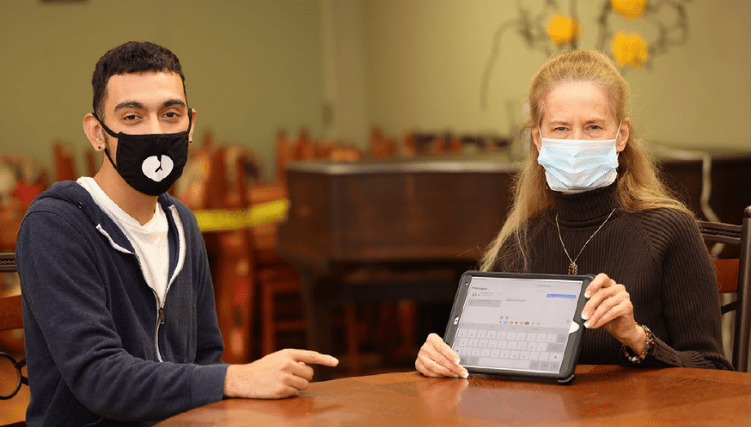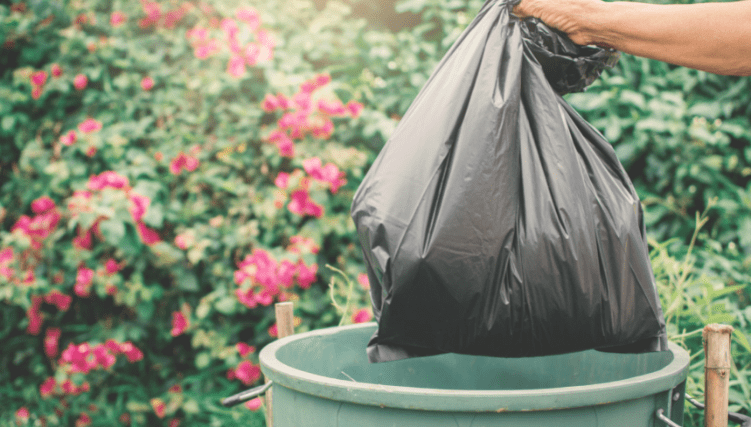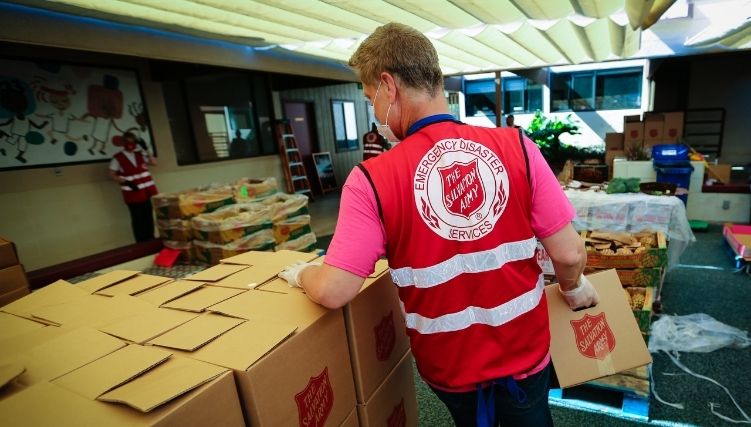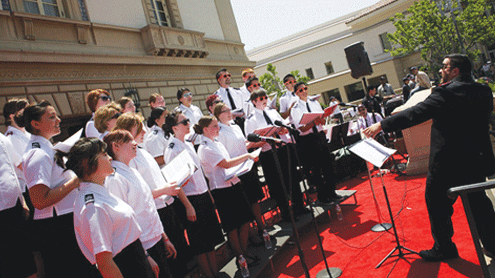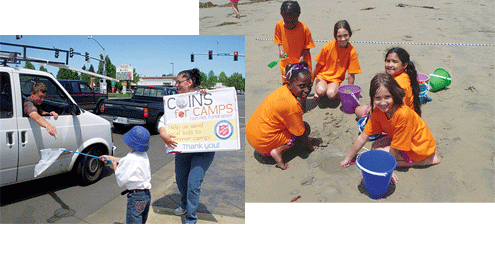Listen to this article
Listen to this article
Loading
Play
Pause
Options
0:00
-:--
1x
Playback Speed- 0.5
- 0.6
- 0.7
- 0.8
- 0.9
- 1
- 1.1
- 1.2
- 1.3
- 1.5
- 2
Audio Language
- English
- French
- German
- Italian
- Spanish
Open text
tech program is helping seniors participate in life online. like other older adults, jeanie lemaire, 70, didn’t grow up using computers and mobile phones. she recognizes the value of technology and has made some attempts to learn, but beyond making a phone call or sending a text on her smartphone, jeanie feels a bit lost. “people say ‘just experiment,’ but it is not in my nature,” she explains. “i am a people person but want to be able to participate in the world.”. recently, lemaire was excited to learn that a new pilot project, tech for seniors, would be offered at her senior housing complex, the salvation army silvercrest in chula vista. this six-month grant project aims to reduce social isolation and loneliness among lower income older adults in the south bay through the use of technology instruction. the project is funded by community congregational development corporation and is a partnership between the south county action network (socan), the health and technology organization sarsis, and two low-income senior apartment complexes in the south bay. tech for seniors is giving ipads to 80 participating older adults so they can gain essential basic technology skills to connect with friends and family, as well as access online resources and tools. intergenerational volunteers (age 18+) and paid staff host small groups and one-on-one activities for participants and engage them with technology. most of the participants have been vaccinated against covid-19, so at this time, the majority of instruction is being conducted one-on-one using proper covid-19 safety protocols. in order to keep the ipad once the program ends, each participant must attend instructional classes over the course of six months that cover topics such as cyber safety, social media, and troubleshooting skills. upon entering the program, participants complete a short skills assessment, which they will take again at the completion. the assessment will provide useful information on the effectiveness of the tech for seniors program. lemaire has thus far received her ipad and an introductory lesson. staff from sarsis helped participants learn some basic skills, such as how to make a video call. she found the experience to be positive and praised her instructor’s patience and positive attitude. “it was an approach of ‘how can we help?’ with no judgment,” she explains. while not everyone in her apartment complex is ready to embrace technology, lemaire hopes that those in the first tech for seniors cohort will ultimately inspire others to become curious and interested as well. she believes it could be similar to how some individuals in her complex were reluctant to receive the covid-19 vaccine at first. however, once those who were hesitant saw that neighbors responded well to the shot and were signing up for their second dose, more were willing to sign up for their first dose. leading by example can be powerful. while skipping out on the covid-19 vaccination could have serious or even deadly consequences for seniors, not having a firm grasp of how technology works can be a risk to health and wellbeing as well. some older adults are left out of many aspects of daily life and unable to fully participate and share their many gifts with the world. lemaire believes that a better grasp of technology will empower older adults to do more for themselves and for others. she notes that many older adults feel left behind, and becoming more proficient in technology will allow her peers to “participate in life as it is today.” the implications range from the simple—comparison shopping online for needed goods and services—to the more profound—using one’s gifts and skills to make a difference for others. “people all need purpose…people are a resource. you can’t pull a dollar bill value on it…seniors have a great amount of information and life experience,” lemaire says. being engaged in life and of service to others has the added benefit of keeping one’s brain healthy. she suggests, “how about being out in the world figuring out a situation for a young child in need? that is going to help your brain. the mind has nothing to do but deteriorate if it is idle.”. being idle is definitely not in lemaire’s vocabulary. she dedicates herself to uplifting others, whether that is making a phone call to someone who she suspects might be feeling down, encouraging people to pursue their goals, or sharing a message of gratitude with a customer service representative’s supervisor. her next project will be teaching tai chi to other residents in the building, first via the online platform zoom and then eventually in-person when it is safe to do so. although she’ll need some help to get the technology set up, she is looking forward to the opportunity to become more proficient using zoom and sharing her skills with others. lemaire has lots of life left to live and she is committed to using technology, with the help of the tech for seniors project, to help her be more empowered, connected, and engaged. “i’m a baby boomer,” lemaire explains. “we have rock and roll in our history! we aren’t going to sit down and play dead for twenty years.”. from aging independence, a publication of the county of san diego health and human services agency, aging and independence services. photo courtesy aging independence. do good:. you’ve probably seen the red kettles and thrift stores, and while we’re rightfully well known for both…the salvation army is so much more than red kettles and thrift stores. so who are we? what do we do? where? right this way for salvation army 101. are you best suited to join the fight for good in disaster relief? mental health? social justice? take our what’s your cause quiz and discover where you can make the biggest impact today.
Open context player
Close context player
Plays:-Audio plays count
tech program is helping seniors participate in life online. like other older adults, jeanie lemaire, 70, didn’t grow up using computers and mobile phones. she recognizes the value of technology and has made some attempts to learn, but beyond making a phone call or sending a text on her smartphone, jeanie feels a bit lost. “people say ‘just experiment,’ but it is not in my nature,” she explains. “i am a people person but want to be able to participate in the world.”. recently, lemaire was excited to learn that a new pilot project, tech for seniors, would be offered at her senior housing complex, the salvation army silvercrest in chula vista. this six-month grant project aims to reduce social isolation and loneliness among lower income older adults in the south bay through the use of technology instruction. the project is funded by community congregational development corporation and is a partnership between the south county action network (socan), the health and technology organization sarsis, and two low-income senior apartment complexes in the south bay. tech for seniors is giving ipads to 80 participating older adults so they can gain essential basic technology skills to connect with friends and family, as well as access online resources and tools. intergenerational volunteers (age 18+) and paid staff host small groups and one-on-one activities for participants and engage them with technology. most of the participants have been vaccinated against covid-19, so at this time, the majority of instruction is being conducted one-on-one using proper covid-19 safety protocols. in order to keep the ipad once the program ends, each participant must attend instructional classes over the course of six months that cover topics such as cyber safety, social media, and troubleshooting skills. upon entering the program, participants complete a short skills assessment, which they will take again at the completion. the assessment will provide useful information on the effectiveness of the tech for seniors program. lemaire has thus far received her ipad and an introductory lesson. staff from sarsis helped participants learn some basic skills, such as how to make a video call. she found the experience to be positive and praised her instructor’s patience and positive attitude. “it was an approach of ‘how can we help?’ with no judgment,” she explains. while not everyone in her apartment complex is ready to embrace technology, lemaire hopes that those in the first tech for seniors cohort will ultimately inspire others to become curious and interested as well. she believes it could be similar to how some individuals in her complex were reluctant to receive the covid-19 vaccine at first. however, once those who were hesitant saw that neighbors responded well to the shot and were signing up for their second dose, more were willing to sign up for their first dose. leading by example can be powerful. while skipping out on the covid-19 vaccination could have serious or even deadly consequences for seniors, not having a firm grasp of how technology works can be a risk to health and wellbeing as well. some older adults are left out of many aspects of daily life and unable to fully participate and share their many gifts with the world. lemaire believes that a better grasp of technology will empower older adults to do more for themselves and for others. she notes that many older adults feel left behind, and becoming more proficient in technology will allow her peers to “participate in life as it is today.” the implications range from the simple—comparison shopping online for needed goods and services—to the more profound—using one’s gifts and skills to make a difference for others. “people all need purpose…people are a resource. you can’t pull a dollar bill value on it…seniors have a great amount of information and life experience,” lemaire says. being engaged in life and of service to others has the added benefit of keeping one’s brain healthy. she suggests, “how about being out in the world figuring out a situation for a young child in need? that is going to help your brain. the mind has nothing to do but deteriorate if it is idle.”. being idle is definitely not in lemaire’s vocabulary. she dedicates herself to uplifting others, whether that is making a phone call to someone who she suspects might be feeling down, encouraging people to pursue their goals, or sharing a message of gratitude with a customer service representative’s supervisor. her next project will be teaching tai chi to other residents in the building, first via the online platform zoom and then eventually in-person when it is safe to do so. although she’ll need some help to get the technology set up, she is looking forward to the opportunity to become more proficient using zoom and sharing her skills with others. lemaire has lots of life left to live and she is committed to using technology, with the help of the tech for seniors project, to help her be more empowered, connected, and engaged. “i’m a baby boomer,” lemaire explains. “we have rock and roll in our history! we aren’t going to sit down and play dead for twenty years.”. from aging independence, a publication of the county of san diego health and human services agency, aging and independence services. photo courtesy aging independence. do good:. you’ve probably seen the red kettles and thrift stores, and while we’re rightfully well known for both…the salvation army is so much more than red kettles and thrift stores. so who are we? what do we do? where? right this way for salvation army 101. are you best suited to join the fight for good in disaster relief? mental health? social justice? take our what’s your cause quiz and discover where you can make the biggest impact today.
Listen to this article











